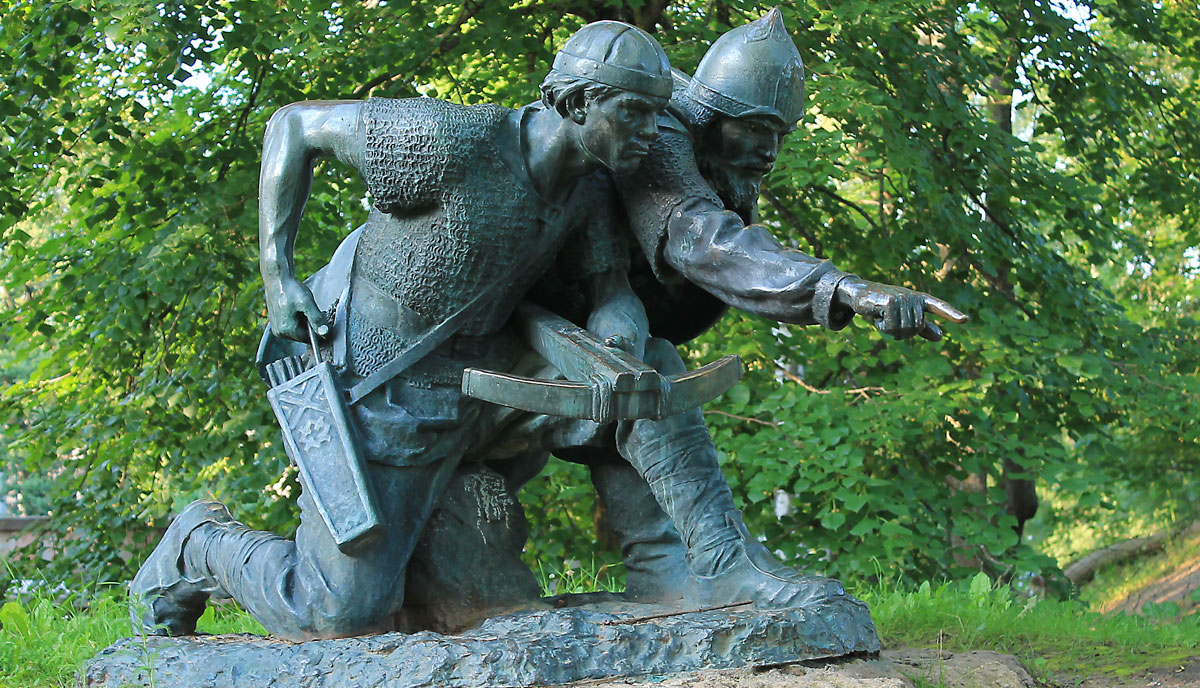
Sculpture Prince Vyachko and Elder Meelis in the Defense of Tartu
One of Tartu’s most beautiful monuments is a sculptural composition dedicated to the glory of Russian-Estonian arms. Originally, it was installed in Kadriorg Park in Tallinn, but in 1980, the sculpture was transferred to the city of Tartu in honor of the 950th anniversary of its founding. Since then, the monument has stood on Kassitoome Hill, hidden from the eyes of passersby behind the dense foliage of trees.
The Significance of the Monument
The monument is dedicated to the Estonian elder Meelis and the Russian prince Vyachko. Unfortunately, it is not included in official guides and tourist routes, and even locals rarely remember it. The monument commemorates ancient times when the Russian Prince Vyacheslav Borisovich, with a military retinue of 200 men, repelled the city of Yuryev (now Tartu) from the Crusaders.
Delving into history (for example, the history of the city of Tartu), it can be stated that many of today’s Estonian cities, including the largest, Tallinn and Tartu, were founded by Russian princes even before the Christianization of Russia. Moreover, after Russia became Orthodox, the Russians did not forcibly convert the Baltic people to the new faith. This contrasts with the Crusaders, for whom the conversion of all non-believers to Catholicism was a supreme idea.
In the early 13th century, the current Baltic region was under the control of the Crusaders. Chronicles recorded that the indigenous peoples were enslaved by the Germans. In 1222, the Estonians, then called “Chuds,” rebelled against their oppressors and sought help from Russian princes. The Novgorod veche decided to send a military retinue led by Prince Vyachko to aid their brethren and help defeat the enemy.
In 1223, the Estonian elder Meelis persuaded Vyachko to stay in Yuryev (Tartu) as ruler and protect the people from possible crusader attacks. In the autumn of 1224, a large German army attacked the city, but the first assault was not successful. The Russians were offered a chance to escape by surrendering the city, but Prince Vyachko refused to betray the Estonians and ultimately fell in battle.
Description of the Monument
The monument to the glory of Estonian and Russian arms was completed in 1950. Its creator was Estonian sculptor Olav Männi. The final version of the sculpture was cast in bronze in 1956. Unfortunately, in 2008, vandals damaged the monument by sawing off the sword held by Prince Vyachko. Given the current state policy of Estonia, it is unlikely that the monument will be restored.
The official name of the sculptural composition: “Prince Vyachko and Elder Meelis, who gave their lives in the defense of Tartu in 1224.”
Location on the Map
Other Points of Interest
- In the center of Tartu, there is also a monument to Barclay de Tolly, a distinguished Russian military leader.
- Tartu also honors great Russian medical figures. In the park next to the university stands a monument to Nikolay Pirogov, a Russian surgeon. Additionally,
- Tartu features a monument to Struve, the creator of the geodetic arc listed as a UNESCO World Heritage site. Struve worked at the Tartu Observatory, which can also be visited today.
